The Wadden Sea stretches from Den Helder in the Netherlands in the southwest to its northern bounderies north of Esbjerg in Denmark, crossing the great river estuaries in the northwest part of Germany. Within the Netherlands, the Wadden Sea is separated from Lake IJsselmeer by the Afsluitdijk, a major causeway in the south. The Wadden Islands separate the North Sea from the Wadden Sea. The Wadden Sea is the largest unbroken system of intertidal sands and mud flats in the world. Animals like seals live in the Wadden Sea and it is a popular breeding area and tanking station for migrating birds. The salt marshes of the Wadden Sea are covered with salt tolerant plants. The Zuidwal volcano is an extinct volcano at more than two km beneath the bottom of the Wadden Sea, the volcano is situated southeast of Vlieland, one of the Dutch Wadden Islands. The UNESCO World Heritage comprises the Wadden Sea Conservation Area in the Netherlands, the Schleswig-Holstein Wadden Sea National Park and the Lower Saxony Wadden Sea National Park in Germany and the Wadden Sea in Denmark. The Dutch part of the Wadden Sea and the German part of the Wadden Sea became a UNESCO World Heritage in 2009. The Danish part of the Wadden Sea was added to the site in 2014. The Wadden Sea is a natural World Heritage Site.
www.werelderfgoedfotos.nl © Copyright World Heritage Photos
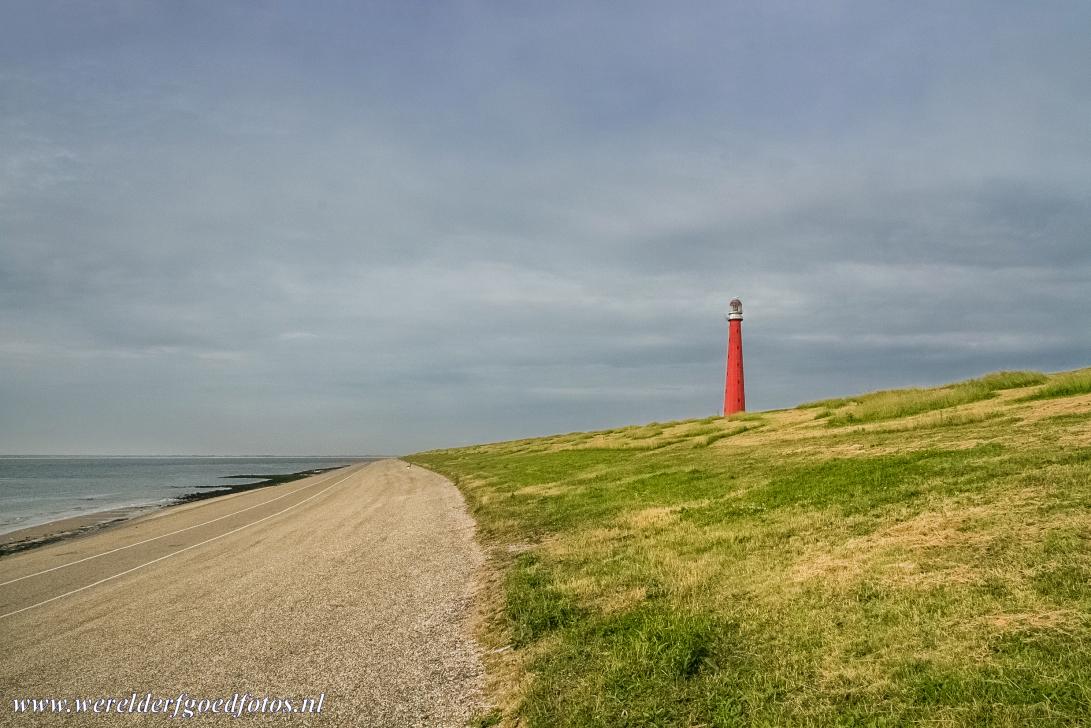
Wadden Sea: The lighthouse Lange Jaap (Long James) overlooking the Wadden Sea nearby Den Helder in the Netherlands. The lighthouse was built in 1877 and is made from cast iron. Lange Jaap has a height of 63, 45 metres, it is the tallest cast iron lighthouse in Europe and the second tallest in the world. The Wadden Sea stretches from the city of Den Helder in the Netherlands, past the great river estuaries in Germany, to the city of Esbjerg in Denmark.

Wadden Sea: The lighthouse Lange Jaap (Long James) overlooking the Wadden Sea nearby Den Helder in the Netherlands. The lighthouse was built in 1877 and is made from cast iron. Lange Jaap has a height of 63, 45 metres, it is the tallest cast iron lighthouse in Europe and the second tallest in the world. The Wadden Sea stretches from the city of Den Helder in the Netherlands, past the great river estuaries in Germany, to the city of Esbjerg in Denmark.
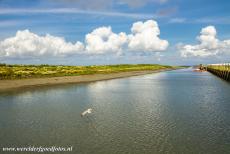
Animals like seals live in the Wadden Sea, it is also a popular breeding area and tanking station for a large number of migrating birds such as the common tern, Eurasian spoonbill, the Kentish plover and pied avocet. The Wadden Sea is threatened by human activities such as gas drilling. Due to human activities, bird species are threatened to disappear from the Wadden Sea such as the Arctic tern, avocet, common snipe, dunlin, eider, oystercatcher and the ruff.
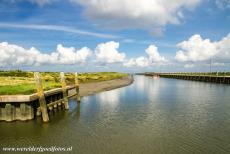
Wadden Sea: The Noordpoldermude is the shallow navigation channel between the harbour of Noordpolderzijl and the Wadden Sea. The harbour of Noordpolderzijl is surrounded by coastal salt marshes. The salt marshes are covered with salt tolerant plants, such as sea lavender and samphire, a pioneer saltmarsh plant, the plant can survive on soils with high salt concentrations. The Wadden Sea was inscribed on the UNESCO World Heritage List in 2009.
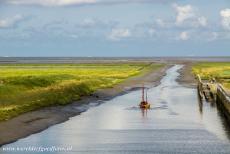
The Wadden Sea is the largest intertidal zone in the world and the largest continuous national park in Europe. The Wadden Sea provides a special and extreme environment for animals and plants. The sand flats, called the wadden, are exposed at low tide, this gives birds an easy access to small animals and insects such as snails, worms and mussels. The sands and dunes are also popular resting places for colonies of seals.
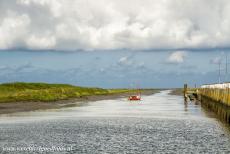
Wadden Sea: The harbour of Noordpolderzijl is the smallest sea harbour in the Netherlands, the harbour is in direct tidal connection with the Wadden Sea. Only small ships can enter the tiny harbour because there is a limited navigable depth. Noordpolderzijl is not a village or city, there is only a cafe, a small harbour and a sluice gate (zijl) in the North Polder. Noordpolderzijl is also one of the starting points for guided mudflat tours.
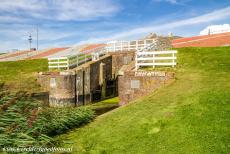
An old sluice gate between the Ommelander Sea Dike and the Wadden Sea at Noordpolderzijl. Along the shallow Wadden Sea, the coast of Groningen, the northeasternmost province of the Netherlands, is being protected by the Ommelander Sea Dike. On the sea-side of the dike there are the salt marshes and mud flats of the Wadden Sea. The dike stretches 70 km along the coast of the Wadden Sea, from Lauwersoog to Delfzijl.
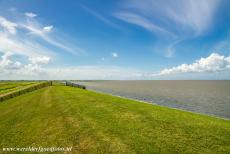
Wadden Sea: The dike between the Wadden Sea and Lake Lauwersmeer was built in 1969 and is 13 km long, it has several sluices and a canal lock. The dike was built to protect the surrounding areas of the inland Lauwers Sea. The sea became Lake Lauwersmeer, a lake with wetlands, reed marshes and polders. Lake Lauwersmeer is a wintering area for geese, including large amounts of barnacle geese. The dike and lake are noted for birdwatching.
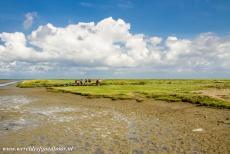
Wadden Sea: A group of mudflat hikers crossing the Wadden Sea, the mudflats are still bare, the sand flats are covered by sea grasses, the grass spread their roots deep into the tidal flats and is very suitable for creating new land. The Wadden Sea is very treacherous, mudflat hiking without a licensed guide is very dangerous. In the Netherlands, mudflat hiking without a licensed guide is prohibited. The Wadden Sea was declared a UNESCO World Heritage in 2009.
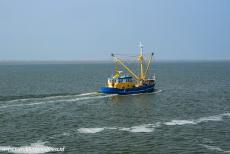
A fishing boat on the Wadden Sea nearby Schiermonnikoog, the smallest of the Dutch inhabited Wadden Islands. The Wadden Islands are a long chain of islands along the edge of the Wadden Sea, stretching from the Netherlands to Denmark, they separate the North Sea from the shallow Wadden Sea. There are about fifty Wadden Islands in the Wadden Sea, most of the islands are uninhabited. The Netherlands has five inhabited and three uninhabited Wadden Islands.
